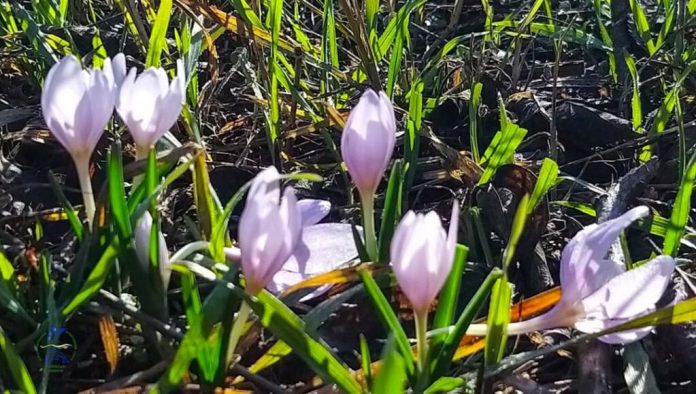На території Національного природного парку “Тузловські лимани” в Одеській області зафіксовано рідкісне природне явище — цвітіння червонокнижної рослини пізньоцвіту анкарського. Цей феномен стався в дні між Різдвом і Новим роком 2024 року, що робить його особливо унікальним, адже пізньоцвіт зазвичай цвіте навесні. Співробітники парку, зокрема доктор біологічних наук Іван Русєв, називають це зимовим дивацтвом.
Пізньоцвіт анкарський — це багаторічна отруйна рослина родини пізньоцвітих. Зазвичай вона трапляється в степах Північного Причорномор’я, Криму, а також у деяких районах Балкан і Малої Азії. Розмір рослини не перевищує 15 сантиметрів, а її квітки мають високу декоративну цінність. У народі цю квітку називають “брандушкою”. Пізньоцвіт анкарський є одним із найбільш ранніх ефемероїдів (рослин, які швидко проходять життєвий цикл і зникають до настання літньої спеки) серед усіх первоцвітів. Як зазначає Іван Русєв, це цвітіння символізує початок весни в екосистемах басейну річки Когильник, біля міста Татарбунари.
Цвітіння пізньоцвіту анкарського в період між святами — явище не тільки незвичне для цієї рослини, але й рідкісне для зимового сезону загалом. За словами Русєва, квітка почала показувати свої перші листки відразу після зимового сонцестояння 2024 року, що свідчить про активізацію природних процесів у досить нестандартний для них час. Це цвітіння є підтвердженням змін у кліматичних умовах та екологічних процесах, які відбуваються в природі, зокрема у регіонах, де рослина зазвичай з’являється навесні. Проте такі відхилення від норми можуть також бути наслідком змін, що викликаються антропогенними факторами.
Попри свою рідкісність та екологічну важливість, пізньоцвіт анкарський стикається з численними загрозами. Однією з головних є діяльність людини, що включає розорювання степових ділянок, випасання худоби, а також вирубку лісів. Через це пізньоцвіт, як і багато інших степових рослин, почав зникати більше ніж 30 років тому, коли відбулося незаконне розорювання понад 50% степових територій у “Тузловських лиманах”. Окрім цього, загроза існує й з боку людини, яка збирає квіти для продажу або викопує бульбоцибулини пізньоцвіту, що лише посилює ситуацію. Таким чином, пізньоцвіт анкарський є не лише частиною природного ландшафту, а й важливою ланкою екосистеми, яка потребує захисту.
Виявлення цвітіння пізньоцвіту анкарського в зимовий період на території Національного природного парку “Тузловські лимани” є не тільки чудовим доказом природної різноманітності, а й важливим сигналом про зміни, що відбуваються в природному середовищі через зміни клімату та антропогенні фактори. Цей випадок є ще одним нагадуванням про необхідність збереження та охорони червонокнижних рослин, таких як пізньоцвіт, від подальшого знищення.


